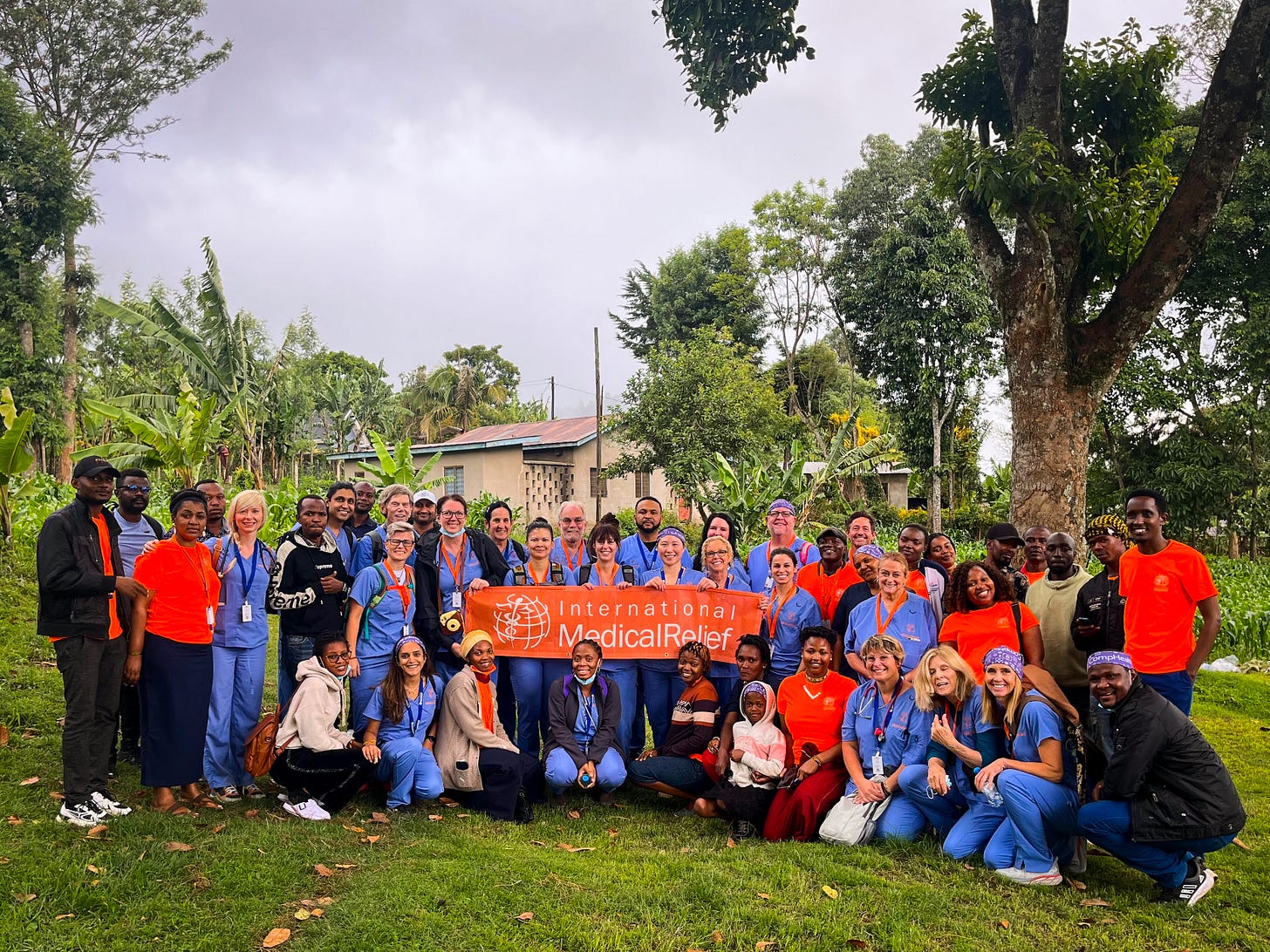
(ARUSHA, TANZANIA) - In a remote community in East Africa, the sun rose over a landscape where greenery met the dusty earth, casting shadows on the foothills of Mount Meru. In a scene far removed from the glossy floors of Western hospitals, there I was, a surgeon from Michigan, stepping into a makeshift tent that served as my operating room. The rural hum was interrupted by the rustle of my team preparing for the day. Onto a wobbly, wooden dining table they laid out pristine sterilized instruments one by one, in contrast to the dirty ground and open sky.
Locals needing a range of medical care, from treatment for high blood pressure and malaria to dental extractions, traveled along the single dirt road passing through town and gathered into a crowd outside of our triage tent. Among them, Mwajuma, a middle-aged woman waited, her eyes holding years of pain and hope. Just as the sediment layers in the Ngorongoro Crater chronicle the passage of millennia, the grapefruit-sized mass on her arm marked the twenty years since a doctor last visited her community. Each year without surgery added to its size and to her trouble doing ordinary tasks. It had become a physical manifestation of the healthcare vacuum that plagues her community.
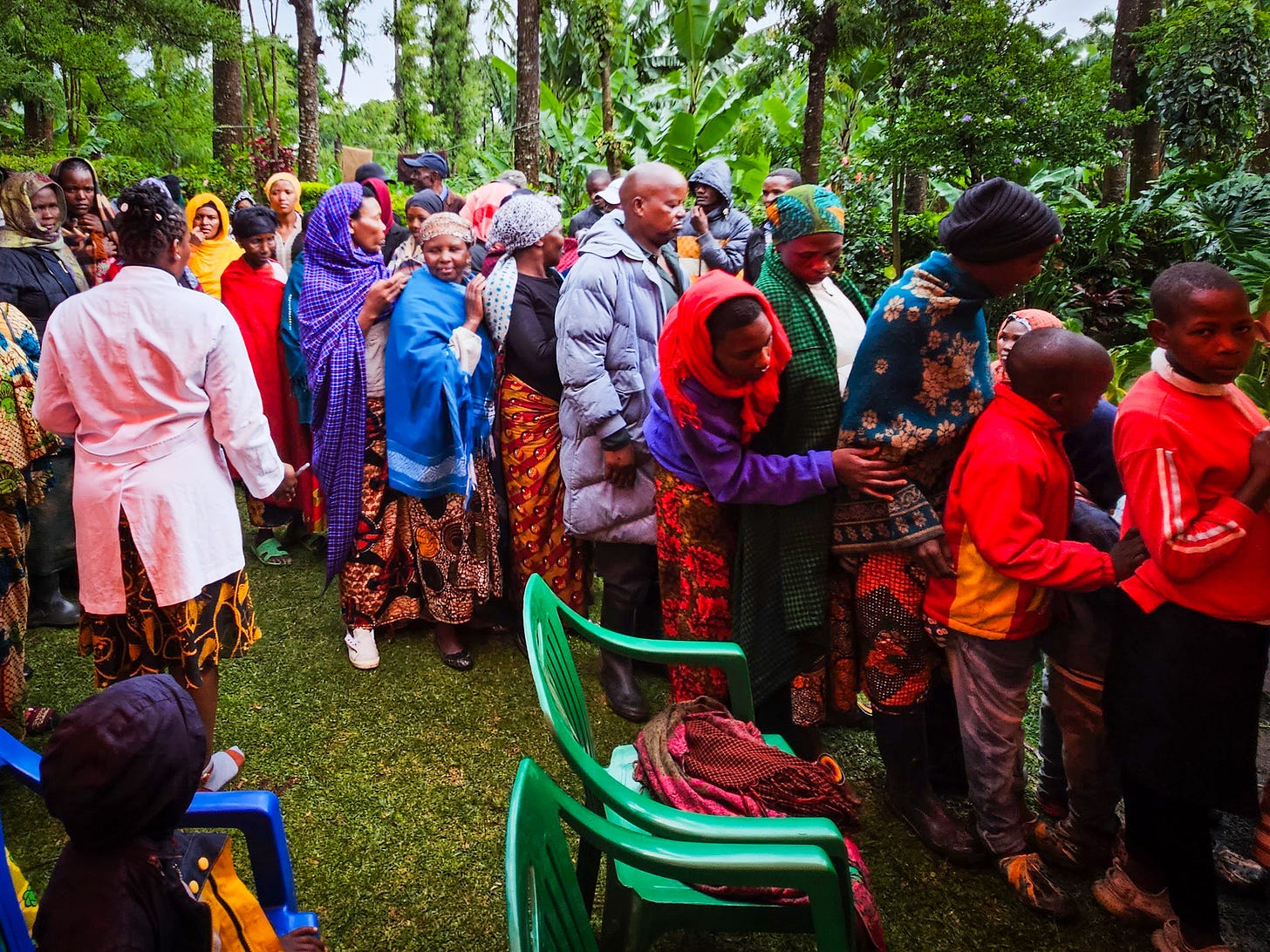
I donned my surgical gloves and the woman offered a brave smile. Each patient seen by International Medical Relief (IMR) that week carried a story of endurance, of a life spent in the shadows of a system that had forgotten them. But that day, beneath the canvas tent, their problems were finally receiving the attention they deserved.
Drawn to Tanzania by the urgent needs of its people, the promise of a safe environment for medical intervention, and supported by a scholarship from the Making a Difference Foundation, I ventured to Africa for a week as a dermatological surgeon. I wanted to use my surgical skills in a challenging environment and fulfill my passion for educating foreign healthcare workers.
As I worked, locals peeked in, their gaze reflecting curiosity for a medical procedure and symbolic of the disparities in a country where, according to the World Bank, 49% of the population lives in extreme poverty, subsisting on less than $1.90 a day.
One of the world’s fastest-growing nations, Tanzania has a burgeoning population that intensifies the strain on a system crippled by a shortage of physicians and a predominance of dispensaries rather than hospitals. Dispensaries are community-based healthcare units providing basic outpatient care but lack the extensive medical services found in hospitals. The gap in healthcare access is glaring when compared to countries like the United States, where there are 27 times more doctors for a population only five times larger. The story of the woman I treated and her long-neglected arm is emblematic of a crisis that weaves through the fabric of millions of Tanzanian lives—a lack of basic healthcare access, a reality that our presence here, however brief, sought to alleviate, even if just for a moment.
The Impact of Colonialism
In the forest, the IMR team and I unpacked our limited supplies. The clinic, set up on the grassy mountainside of a village near Arusha, challenged the Western definition of a sterile environment: animals roamed between the tents and flies buzzed around my surgical field as I operated on patients. The environment is always part of the patient's story, and here was a challenge unlike any faced back home.
Under colonial rule, the approach to healthcare in Tanzania was driven by the economic and political agendas of European colonizers rather than the needs of Tanzanians. The colonial-era system concentrated hospitals in urban areas, leaving rural regions underdeveloped. Today this legacy persists, with rural areas facing drug supply lapses, personnel shortages and geographical isolation.
Dr. Lister John Seremon is a young, reserved Tanzanian doctor who accompanied the IMR team. He has never traveled outside of Tanzania. He and his colleague Dr. Elisha spent the week away from their inner-city clinics, helping IMR integrate with the rural population while learning from Western doctors. Dr. Seremon observed, "Our rural infrastructure is struggling. We lack running water, basic supplies and facilities, making it challenging to help people here."
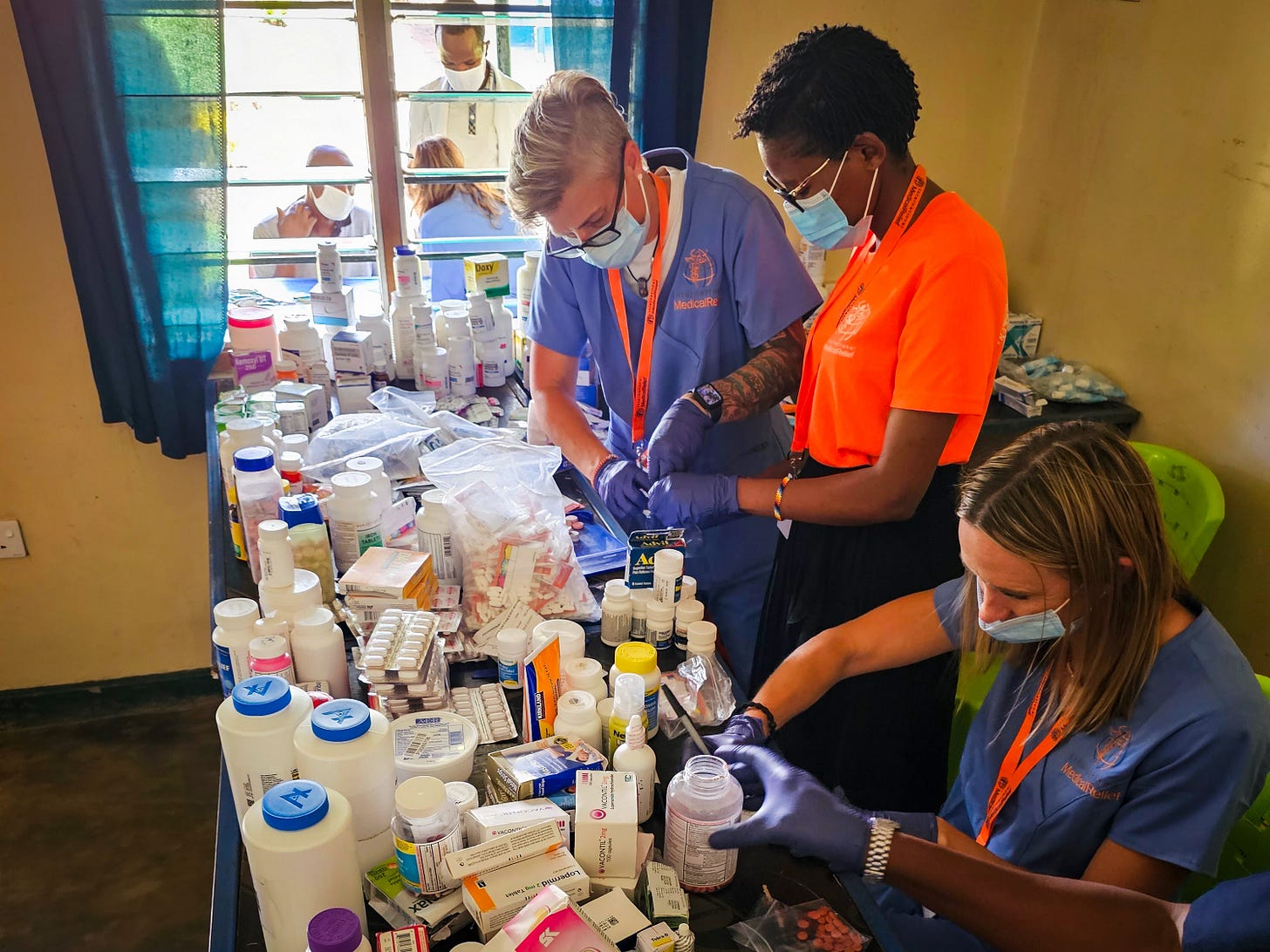
The patients, ranging from infants to the elderly, bring diverse health concerns. “In remote areas, we see remarkable resilience," Carrie Smith, the team leader from IMR, reflected. Every month, Ms. Smith travels to a new IMR site in Asia, South America, Africa or Europe. "The patients show immense trust in our care, despite their hardships, and display incredible ingenuity in managing their health with limited resources."
But the team's experience in the field reflects a wider issue in Tanzania: a critical shortage of healthcare workers and maternal health experts. In 2021, the Tanzania National Nurses Association (Tanna) issued an urgent appeal for more nurses and midwives in the nation's public health facilities. Ramadhan Mgoo, the Vice-President of Tanna, pointed out that nurses often care for 50 to 60 patients daily, up to 20 who may be expectant, a number significantly higher than the ideal nurse-to-patient ratio of one nurse to eight patients. The WHO has highlighted the challenges of human resource insufficiency and demotivation as key factors affecting the health system. "Training enthusiastic providers like Seremon is crucial," Smith said. "It's about building capacity within the community."
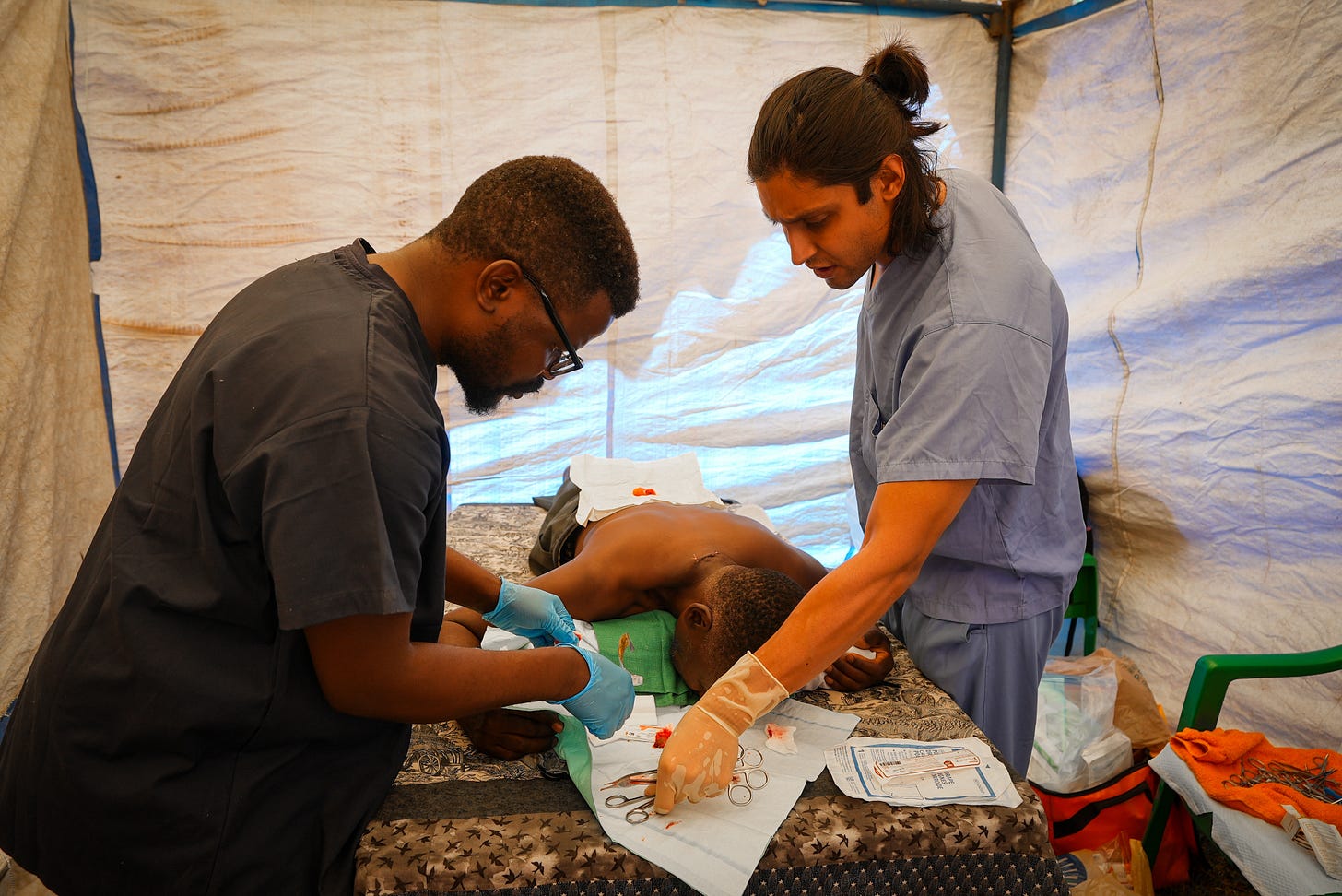
With under one physician per 10,000 people nationwide, access to basic medical care remains a distant dream for millions. "The gap in access here is immense. Many of my people suffer because the nearest doctor is several hours away, by foot,” Seremon said.
In Arusha, a city with a population of 617,631, some face an abundance of medical resources while others struggle for the bare minimum. But in the outer villages, everyone struggles to meet their needs due to a nonexistent healthcare infrastructure, prohibitive costs and persistent medicine shortages.
Local Voices and Stories
The human impact of this healthcare crisis is profound. One elderly woman, Amina, her arm also deformed by a neglected growth, shared her relief through my translator Grace at finally receiving care. “I've been waiting for this since 1998,” she lets out in Swahili, hugging each patient in the waiting room and each person she passes while leaving, tears rolling down her cheeks. “Twenty-five years ago, I gave birth on that same table.“
Dr. Sachin Mehta is a dentist from Minneapolis who has completed three IMR trips in the past two years. As the day begins, he turns on a Rolling Stones playlist and thinks about another aspect of the situation. "During four days here, I might extract 100 rotten teeth," he says. "There is a lack of dental care, but it’s worsened by a massive public health education issue."
Cultural and educational barriers complicate the landscape. "There's little concept of preventive care, like brushing teeth regularly," Mehta reflected. "Educational programs are as important as medical treatments in these communities."
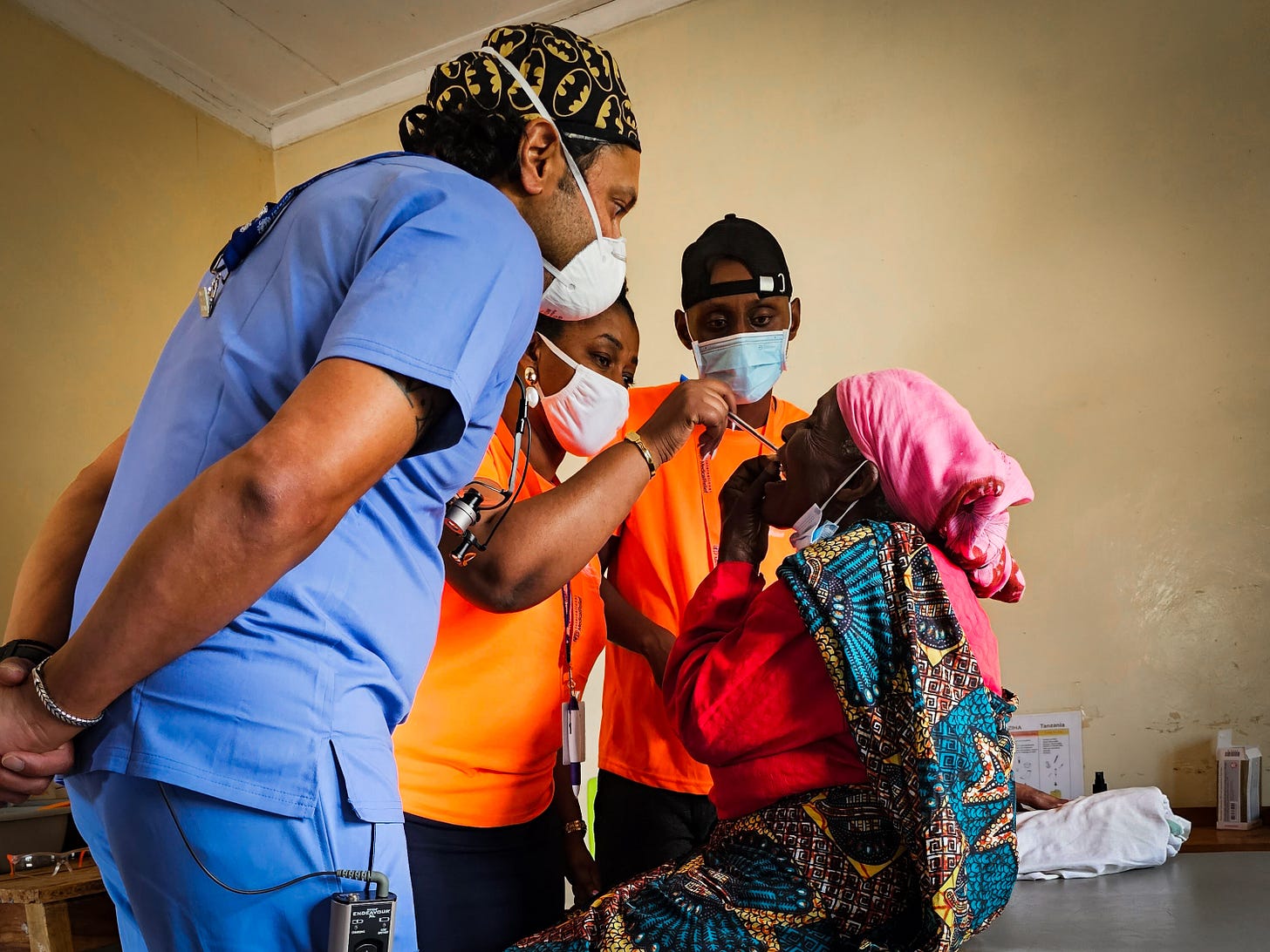
Health financing in Tanzania is another concern. The reliance on out-of-pocket payments places a significant financial burden on households, often deterring them from seeking necessary care. “The cost of medicine is a major barrier for patients here," said nurse practitioner Danielle Kohler while standing in line to try the locally prepared food during her brief lunch break. "I’m seeing families who would have to spend everything just to see the doctor, leaving no budget for the actual medicine.”
Kohler, who practices at the Cleveland Clinic, faced the challenge of running out of essential medicines like amlodipine, a generic blood pressure medication, on her first day in Tanzania. "It was heart-wrenching to turn people away knowing we couldn't treat them," she lamented. “We turned our efforts towards education in those cases.”
I, too, encountered difficulties with the scarcity of simple acne, steroid and fungus medicine for my patients. These stories underscore the everyday realities of life in Tanzania, where even basic medical needs can go unmet for years.
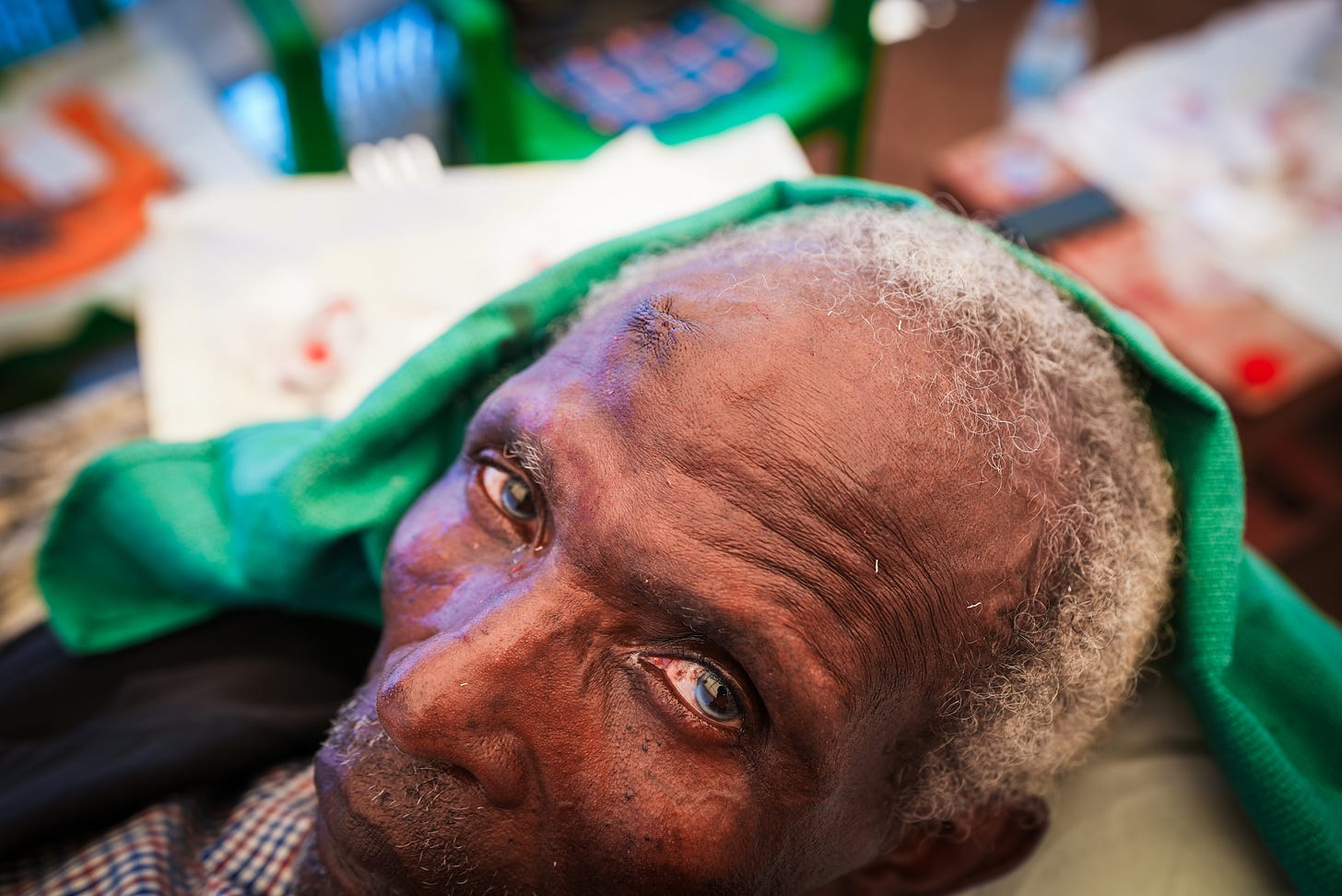
Looking Towards the Future
As the mission concluded, the question of sustainability loomed. "What happens next week when we leave?" we wondered. The temporary relief provided by IMR was invaluable, but the need for ongoing medical support in Tanzania is clear. Our team, with six doctors, represents just a drop in the ocean of need. To reach the ratio of doctors per population typical of developed countries, Tanzania falls short by more than 162,000 doctors.
Seremon, now familiar with procedures like cyst and lipoma removal, represents a glimmer of hope. "Training Tanzanians like Dr. Seremon is crucial," says Smith. "Building Tanzania will require leaving skills behind." As Dr. Seremon navigated through his final procedure, an unexpected visitor - a frog - leapt into the tent, momentarily stirring the calm atmosphere. I watched him complete the surgery unperturbed, with a steady hand. After the procedure we exchanged contact information, establishing a line of communication for future consultations on complex cases.
The geographic disparity in healthcare access is one unsolved problem. Significantly more women in urban areas receive skilled antenatal care and delivery assistance than those in rural areas. The divide is also socioeconomic, with wealth and education playing major roles in care access. Mehta, the visiting dentist, keenly noted, "It's not just the miles that separate urban and rural care. There are disparities in resources, education levels, and the ability to afford care. In urban areas, services might be a short walk away, but in rural communities, they're beyond out of reach."
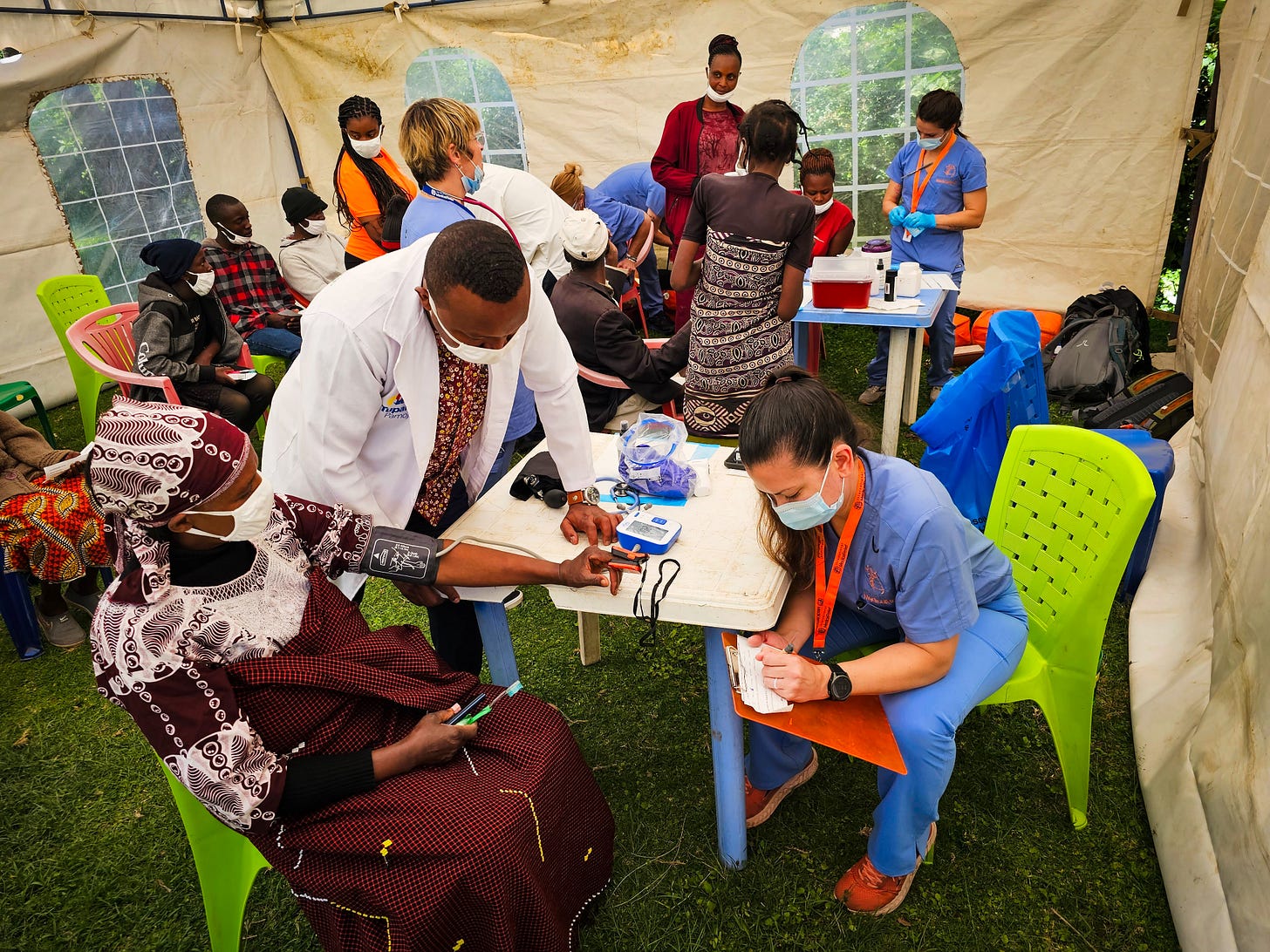
As we packed up the tents and I straggled behind the team already loading the buses, I noticed a weary mother whom I had seen quietly waiting several hours outside of my tent with her child, who was bearing a severe rash. Tired from four endless days in the clinic, I called Grace to come translate. She explained that in the day's rush, the patient had arrived 8 hours ago but inadvertently forgot to register. However, the clinic had a strict policy to see registered patients only, and registration was now closed. Faced with the reality that this might be her child's only opportunity for medical attention, I briefly examined the child and offered advice for temporary improvement until further care would be available.

On the bus ride back to town, discussion turned to future initiatives. Among the proposed solutions were partnerships with the government and ongoing training for local healthcare workers. Although IMR has returned to Tanzania multiple times a year since 2015, maintaining continuity among providers and patients remains a challenge. Dr. Elisha, reflecting on this, commented, "We need a long-term plan to truly uplift our healthcare system. Anyone who wasn’t seen this time will have to wait six months for IMR to return."
The sun set over the Serengeti and our makeshift clinic closed for the day. But the journey towards better healthcare access in this part of the world is far from over. It's a path lined with challenges, but also with stories of resilience and hope; stories that remind us of the enduring spirit of a community determined to overcome its struggles and of the global responsibility to bridge the vast healthcare divide.



